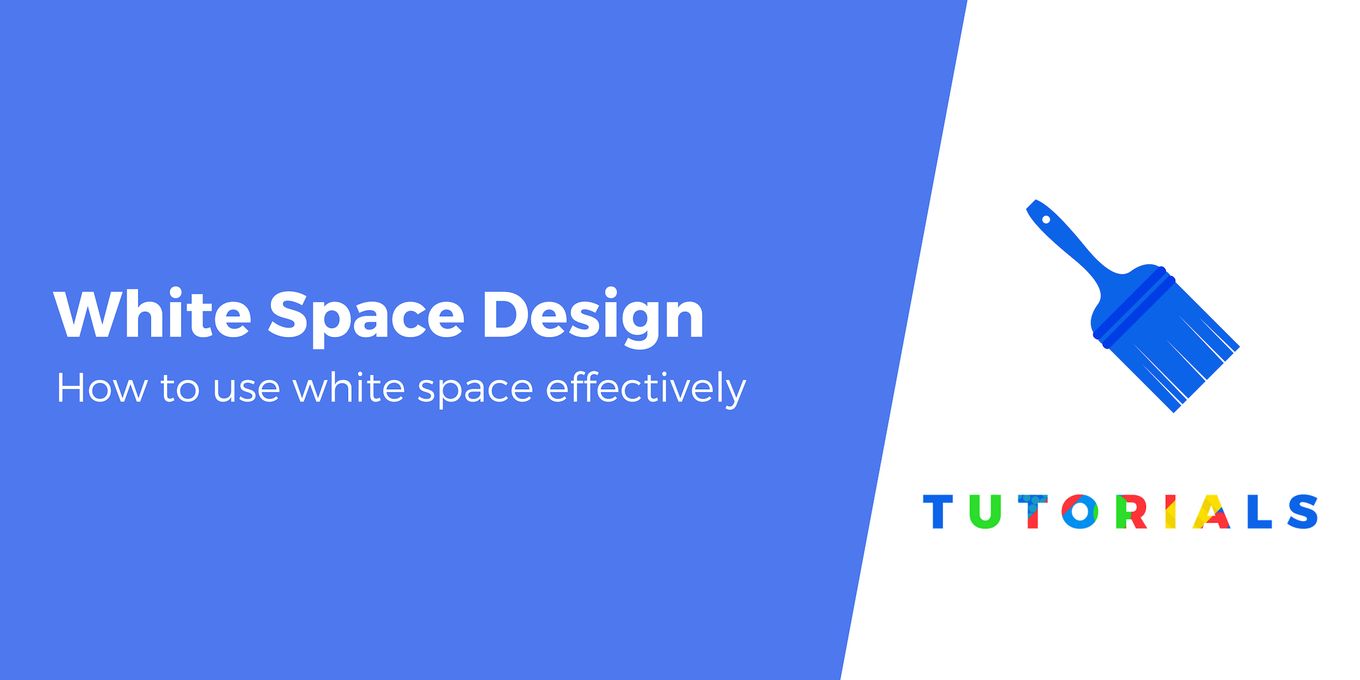How to Use the White Space in Website Design Effectively?
After reaching a completed design concept do you experience any feeling that the work needs completion?
You notice two distinct problems with the design which shows excessive details or missing crucial elements. The designers need to take note of these subtle observations since they steer the creative procedure. Web designers must understand and integrate such intuitive design insights when they practice their trade by using their expertise to reshape and enhance both surplus and absent design components.
The core task of their profession lies in front of designers yet developers who tackle this challenge with creativity can achieve mastery. Your ability to implement white space strategically for design composition creation stands as a critical factor in the design process.
Is there really a white space?
Have you envisioned spaces as spaces between designs? This is the most common line of thinking when it comes to discussing the empty areas of web designs. But this approach is wrong. The gaps in the design are not just fillers of space – they are its most important element in itself, which carries a semantic load!

The white space can be compared to mortar between bricks or glue in stained glass mosaics. Whitespace is the filling that holds content areas together and helps shape the overall design direction.
Similar to a layered mosaic without glue, the Web design company web designs without gaps will just be a colour mess. When you understand the importance of so-called white space in design, you will be better equipped to use it in the most efficient way.
White Space Concept in Web Designing
The white space in web design is the area between site elements that are not filled with content. This concept can also be understood as the way the elements are arranged on the website.
Space is often referred to as “white,” although color is not a requirement. It can be either a texture or a background of any shade, as long as there is no content in the area. These spaces should not be perceived as empty space, it is in some sense “glue” that connects elements on the page. The different type of white space are:
- Macro space: This term refers to the spaces between the main elements of a web page and the space around each detail.
- Micro space: These are small gaps within an element, like, line spacing in the text, gaps between pictures, separators, and more.
- Active Space: The white space that surrounds objects draws users’ attention to these elements, increasing their visibility.
- Passive Space: This is the minimum space between elements required for proper navigation, identifying active interface elements, and ensuring good readability of the content.
The use of this or that option depends on the amount of content on the layout and the overall style of the project. For example, for news websites, it is important to build blocks to make articles easier to read, and for landing pages and online stores, it is the ability to draw attention to the product. The emptiness is perceived by some customers as a lost profit – after all, additional information can be placed on the formed space.
Different Ways to Use White Space in Website Design
Focus
Now that you have figured out the importance of white space, it remains to understand how to use them. To do this, let’s do the exercise. Open a new tab in your favourite browser and go to google.com. What’s the first thing that catches your eye? Surely, you have noticed the Google logo, right? Where is it located? Of course, your eyes did not find it in the upper corner, although the search by habit begins there. Why then did your attention immediately focus on the centre of the page, bypassing the rest of it?
Now, you get the point. Google effectively uses white space to focus the visitor’s focus in the centre of the page, where the gist of the page is. Whitespace is one of the simplest and most useful methods of manipulating your audience’s attention. You can use them to add emphasis to the layout. By focusing the audience’s attention on these areas, you can highlight important content and more effectively convey its meaning to the visitor.
Organization
By directing the focus of the audience’s attention, whitespace gives designers an easy way to organize layout elements. Just as, the white space is used to separate blocks of text and improve the readability of important passages. Use them effectively to highlight important blocks of a page template.
Here’s a handy tip for maintaining consistency when inserting spaces in your layout. They can be used to group content blocks. Make an effort to streamline, unify the use of spaces in indents, blocks, text, and graphics. Develop a single system of white-spaced content for all pages.
One of the nice things about white spaces is that they are very easy to set up. In doing so, they can have an amazing effect. Don’t be afraid to experiment!
Accent
With the magic of guiding the audience’s eyes to the right places, whitespace can really help highlight the most significant design elements. Based on the advice in the previous section, breaking up a continuous flow of content can quickly draw attention to the sections you need. Manipulate this property skillfully and accurately.
The systematic use of white space in your artwork will also help create style recognition in the eyes of your audience. As the visitor explores the pages you have assembled, they will develop a lasting impression of a corporate, high-quality design. The hallmark of your work is the skilful use of empty areas to focus on the essentials.
A great example of the simplest implementation of this principle is to slightly change the spacing between the letters in the headings you want to emphasize. When you feel the effect, go further, try changing the amount of spacing between the sections of elements in your layouts. It will work.
The Voids Don’t Have to be White
All of the above refers to the direction of the website visitor’s gaze. That is what using spaces is best for. Just because of the very name “white space” does not follow the conclusion that it must certainly be white! There is no unwritten design law that enforces one colour or no colour between key elements.
Consider Important Elements
One of the most important tasks of a designer is to prioritize design elements. Using white space is an easy and convenient way to prioritize these.
Distance and attention are two completely interconnected concepts in human perception. By increasing the stroke around text and squares, you put more emphasis on these elements: the person will pay more attention to them simply because there is nothing around them!
For example, Google takes this technique to the absolute; negative space emphasizes the main website functionality, the search bar. When the users visit Google, their attention is immediately drawn to the search bar, all thanks to the white space.
Any layout is perceived by a person as a composition of groups of objects. This happens because our brain subconsciously connects details that are close to each other. The Gestalt principle of law clearly states that two objects in close proximity to each other are perceived by us as one whole. To achieve this goal, we again turn to the white space.
What Does the White Space on the Website Affect?
Readability of the text
By adjusting line spacing, paragraphs, and indentation, the text is legible and readable. Large line white spaces make it easier to read because the user divides the text into several parts and the eyes cover much less content. It is important to change both the line spacing and the spacing between paragraphs.
This helps the user navigate the text and move from one thought to another. Micro-space should be considered when designing typography for a website. Also, with the help of white spaces, headers and background inscriptions are distinguished.
Project Style and Brand Awareness
By placing the elements on the website in one way or another, the designer sets the tone for the entire project and builds a unique composition. This is how the brand declares itself as a company that cares about its image on the Internet and attracts customers with modern technologies.
User’s Perception of Information
Drawing attention to a specific element is one of the tasks of a designer. However, this cannot be done if the website does not have a role assigned to an empty space. In the 2000s, there was a tendency to clutter up the site with small elements, and targeted actions stood out only with bright colours and shadows.
On such websites, there were a lot of images and animations, scattered colours and a lot of information that seemed to “press” on the user. Nowadays it is much more effective to use indents and free space, which seems to fill the gaps with air and gives an opportunity to “breathe”.
Wrapping Up – How to Use the White Space in Website Design Effectively?
As of now, we have learned that white space is not white, and this is the part of our projects where nothing happens. This is an important design principle that should not be overlooked by any professional web designer as they decide whether a webpage is usable or not and whether a particular element gets the attention it needs.
Hopefully, you liked this article. If you have queries or suggestions related to the same, then, let us know in the comment section below.
Thanks for reading!!




Great Blog!! Nice blog thanks for sharing it content is easy to understand Thanks very much for nice blog
Thanks keep reading and sharing